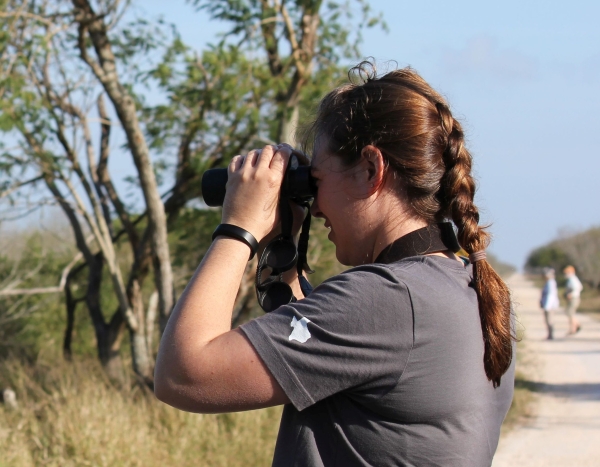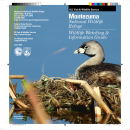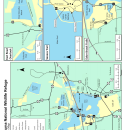
Birding and other wildlife watching is the most popular activity at Montezuma NWR. From the novice birder to the experts from the Cornell Laboratory of Ornithology, birding at Montezuma offers exciting opportunities through the seasons!
The best time of day to view wildlife is dawn to mid-morning or late-afternoon to dark. The refuge is open from ½ hour before sunrise to ½ hour after sunset.
Spring Migration
Late February – April. Canada and snow geese number in the tens of thousands. Many species of ducks stop on their way to breeding grounds farther north. Look for ringnecks, hooded mergansers, shovelers, mallards, widgeon and canvasbacks. Listen for spring peepers and tree frogs in the shallow ponds. Shorebirds are common early-May to mid-June. Watch for peregrine falcons and other birds of prey swooping over congregations of shorebirds in search of a meal. Warblers peak mid-May. Visit the Esker Brook Trails for your best chance to view these little migrants.
Summer Nesting/Brood-rearing
Bald eagles generally hatch mid-April. Young eagles are often spotted atop muskrat houses on the Main Pool and Tschache Pool. Osprey hatch by mid-May and grow quick and strong for their fall migration—some go as far as South America.
Canada geese and several duck species nest on the refuge beginning in early-March. Watch for broods in early-May and see them grow throughout the summer. Scan the water at the beginning and end of the Wildlife Drive to see wood duck broods. Pied-billed grebes and American coots also nest and raise young here. Great blue herons nest in the woods adjacent to the Main Pool; although the rookery is not visible from the Wildlife Drive, herons make a good show throughout the summer (also look for green and black-crowned night herons, and America bittern). Cerulean warblers, rare in New York State, often nest in the trees at the head of the Wildlife Drive, along the Seneca Trail, or around May’s Point. Black terns also nest on the Refuge; their nesting population is increasing over time thanks to the refuge’s ability to manage water levels.
Fall Migration
Mid-August through mid-October offers great opportunities to view shorebirds (peak in September). Killdeer, yellowlegs, and plovers feast on the exposed mudflats. Montezuma boasts several areas managed for shorebirds. Ask at the Visitor Center to see which one’s hot!
Mid-September to freeze-up, geese and waterfowl come back through the refuge on their way south to wintering grounds. Mid-November, waterfowl numbers peak to the tens of thousands! Watch too for eagles and other birds of prey as they make their way to open water and/or winter grounds further south.
Winter Wildlife
The Wildlife Drive is closed in winter. You can walk, cross-country ski or snow shoe on the refuge’s walking trails, taking advantage of the excellent opportunity to see white-tailed deer, fox, small mammals and resident birds such as woodpeckers, nuthatches, cardinals, and chickadees (Note: Esker Brook and South Spring Pool Trails are closed from November 1 through the end of New York State’s white-tailed deer hunting season. Most of the Seneca Trail is closed January 1 through August 31 in accordance with federal and state regulations for bald eagle nesting protections). Our bald eagles also stay the winter, as long as the canals remain unfrozen.



